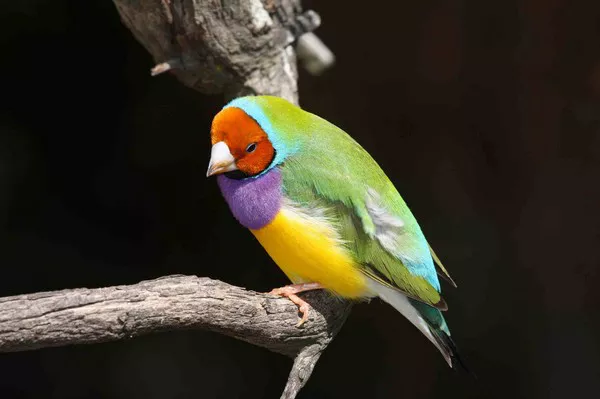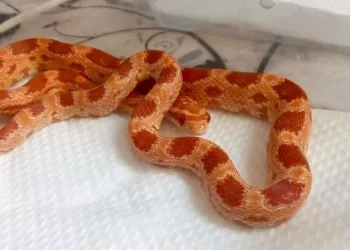Conures are small to medium-sized parrots belonging to the Aratinga genus. They are known for their vibrant feathers, playful personalities, and intelligence. As a pet, they can form strong bonds with their owners and often exhibit affection by seeking attention, cuddling, and playing. However, when it comes to physical interaction, it’s crucial to understand where not to touch your conure, as some areas of their body are more sensitive than others. This knowledge will help you foster a healthy relationship with your pet, ensuring they feel safe and comfortable while minimizing the risk of stress or injury.
In this article, we will explore the areas of your conure’s body that should be avoided during physical interaction. We will also discuss how to interpret your bird’s body language, as well as general handling techniques that will make both you and your conure feel more at ease.
Understanding Your Conure’s Body Language
Before we dive into specific areas where you should avoid touching, it is essential to understand your conure’s body language. Parrots, including conures, communicate through a combination of sounds and body posture. Recognizing their cues will help you know when they are comfortable or when they are signaling discomfort.
Some common signs that your conure may not want to be touched include:
- Fluffing up their feathers: While this can sometimes indicate relaxation, if paired with other signs like puffed up cheeks, it can also signal irritation or stress.
- Glaring or intense staring: A fixed stare may indicate that your conure feels threatened or agitated.
- Tail feather movement: When a conure wags or flicks its tail aggressively, it may be indicating discomfort or annoyance.
- Beak grinding or biting: While beak grinding can sometimes indicate contentment, if your conure starts nipping or biting, it’s a clear sign they are uncomfortable.
- Wing flapping: This can be a sign of excitement, but when done excessively, it can indicate that your bird is trying to get away from you.
If your conure exhibits any of these behaviors, it’s best to give them space and avoid trying to pet them. They may need some time to calm down before engaging with you again.
1. Head Area: The Most Sensitive Spot for Conures
The head of a conure is one of the most sensitive parts of its body. While many pet birds enjoy head scratches, not all conures are the same. Some may be more sensitive in this area, and excessive touching of the head could result in discomfort or agitation.
Why the Head Area Can Be Problematic
Conures have a natural instinct to protect their head and face, as these areas are highly vulnerable. In the wild, a bird’s head is an essential part of its survival strategy, as it houses vital sensory organs like the eyes and ears. Being too rough or intrusive with your touch around their head can trigger defensive behavior. A common reaction may include biting, pulling away, or raising the feathers in a defensive posture.
Moreover, birds have a delicate sense of balance that is partly controlled by the head. Overstimulating this area could cause confusion or stress, leading to a heightened sense of unease. This is especially true if your conure hasn’t been accustomed to being handled in this way.
What You Should Do Instead
While it’s fine to pet your conure on the head occasionally, always observe your bird’s reaction carefully. If your bird pulls away or shows any signs of distress, stop immediately. To build trust, start by offering a gentle touch at the back of the head or under the beak, as these areas may be less sensitive.
If your conure enjoys head scratches, proceed slowly and gently. Watch for body language signs such as relaxed posture and soft vocalizations, which can indicate enjoyment. Never force a head scratch, and always allow your bird to decide when they want to engage.
2. The Neck Area: Handle with Caution
The neck is another area that should be approached with caution. While it might seem like a good spot to pet or scratch, the neck is vulnerable for most birds, including conures. A bird’s neck contains essential muscles and nerves that support its head and enable movement.
Why the Neck Area Can Be Problematic
When you touch the neck area, especially near the throat or the base of the skull, it can make your conure feel vulnerable. Birds are sensitive to pressure in this area, and forceful or inappropriate touching may cause discomfort. The neck muscles also play a significant role in maintaining the bird’s balance and posture, so too much pressure can be unsettling for them.
What You Should Do Instead
If your conure is comfortable with touch, gently approach the neck from the sides. Keep the touch light, and avoid applying pressure or grabbing the neck. Observe your bird’s reaction; if they move away or appear nervous, stop and allow them to regain their space.
It’s also essential to let your conure initiate physical contact with you, rather than forcing your touch on them. Some conures will naturally lean in to be touched around the neck, but it’s important not to overdo it.
3. The Wings: Avoid Grabbing or Holding
Bird wings are crucial for balance, flight, and movement. While it’s tempting to pet your conure’s wings, they should never be grabbed or held unless necessary for safety or during a veterinary exam. It’s essential to respect their wings and the power they hold.
Why the Wings Can Be Problematic
The wings of a bird are delicate, and they contain many muscles that allow for flight and maneuvering. If you touch or grab the wings too roughly, it can cause injury or discomfort. In the wild, birds protect their wings because they are essential for escape and survival. Over-handling their wings can trigger a fight-or-flight response and make them feel unsafe.
What You Should Do Instead
Instead of trying to touch or hold your conure’s wings, focus on creating trust through other forms of interaction. Petting them on the head, back, or chest (in some cases) can be more appropriate. If your conure seems to enjoy physical touch, allow them to relax and get comfortable before approaching sensitive areas like the wings.
When handling your conure for reasons such as flight training or veterinary checkups, always ensure you are using proper techniques that prevent harm or distress to the bird.
4. Feet and Toes: Sensitivity and Vulnerability
The feet and toes of conures are extremely sensitive. Birds rely on their feet for grasping, perching, and climbing. Their feet are equipped with strong talons that are used for holding onto perches, toys, and other surfaces. For this reason, it’s crucial not to handle their feet too roughly.
Why the Feet and Toes Can Be Problematic
Conures, like many parrots, have sensitive feet that are used for both mobility and communication. In the wild, a bird’s feet are constantly in use, allowing them to grip objects and perch comfortably. Touching or squeezing their feet can be uncomfortable and may even cause injury if done incorrectly.
Moreover, some conures are particularly sensitive to having their toes touched, as it may trigger a defensive response. If your bird feels threatened or scared, they might bite, scratch, or even try to fly away.
What You Should Do Instead
It’s generally best to avoid touching your conure’s feet unless absolutely necessary. If you need to check their feet for any health concerns (such as signs of infection or injury), be gentle and quick. Be sure to provide positive reinforcement afterward so your bird knows it’s a safe and non-threatening experience.
If your conure enjoys interacting with you, it’s best to focus on petting their head, neck, or back, and allow them to move their feet naturally without interference.
5. The Tail Feathers: Leave Them Alone
A bird’s tail feathers are another sensitive area. They serve as an important tool for balance and coordination. If you touch or pull at the tail feathers, it can cause pain or distress.
Why the Tail Feathers Can Be Problematic
Birds use their tail feathers as a balancing tool, especially when they are flying or maneuvering in tight spaces. If these feathers are touched or pulled, it can make your conure feel unsteady or anxious. Additionally, tail feathers are often used in communication—ranging from defensive postures to displays of excitement. Disrupting this area can make your conure feel threatened or confused.
What You Should Do Instead
Avoid touching your conure’s tail feathers altogether. If you need to handle your conure for reasons like clipping feathers or checking for parasites, use proper restraint methods and always work gently and quickly. Afterward, allow your bird to regain its balance and composure.
6. General Guidelines for Handling Your Conure
Understanding where not to touch your conure is essential for building a positive relationship. But just as importantly, knowing how to handle your bird gently is key to preventing stress and discomfort. Here are some general guidelines to keep in mind:
- Respect their space: Every bird is different, and some may prefer more personal space than others. Let your conure come to you for interaction rather than forcing contact.
- Start slow: If your conure is new to being handled, start with slow, gentle strokes on areas they are comfortable with, like their back or the top of their head.
- Use positive reinforcement: Reward your bird with treats or praise when they respond positively to touch. This builds trust and helps them associate handling with a pleasant experience.
- Avoid rough handling: Never grab, squeeze, or pull at your conure’s body. Rough handling can damage their sensitive muscles and feathers, and it can cause stress and aggression.
Conclusion
Conures are wonderful pets with unique personalities, and they thrive in environments where they feel safe and loved. By understanding where not to touch your conure, you can ensure that they feel comfortable and secure during interactions. Respect their body language, avoid sensitive areas like the head, neck, wings, feet, and tail feathers, and always handle them gently and with care.
Through patience, observation, and understanding, you can foster a trusting relationship with your conure that will last for years to come.
Related Topics:























